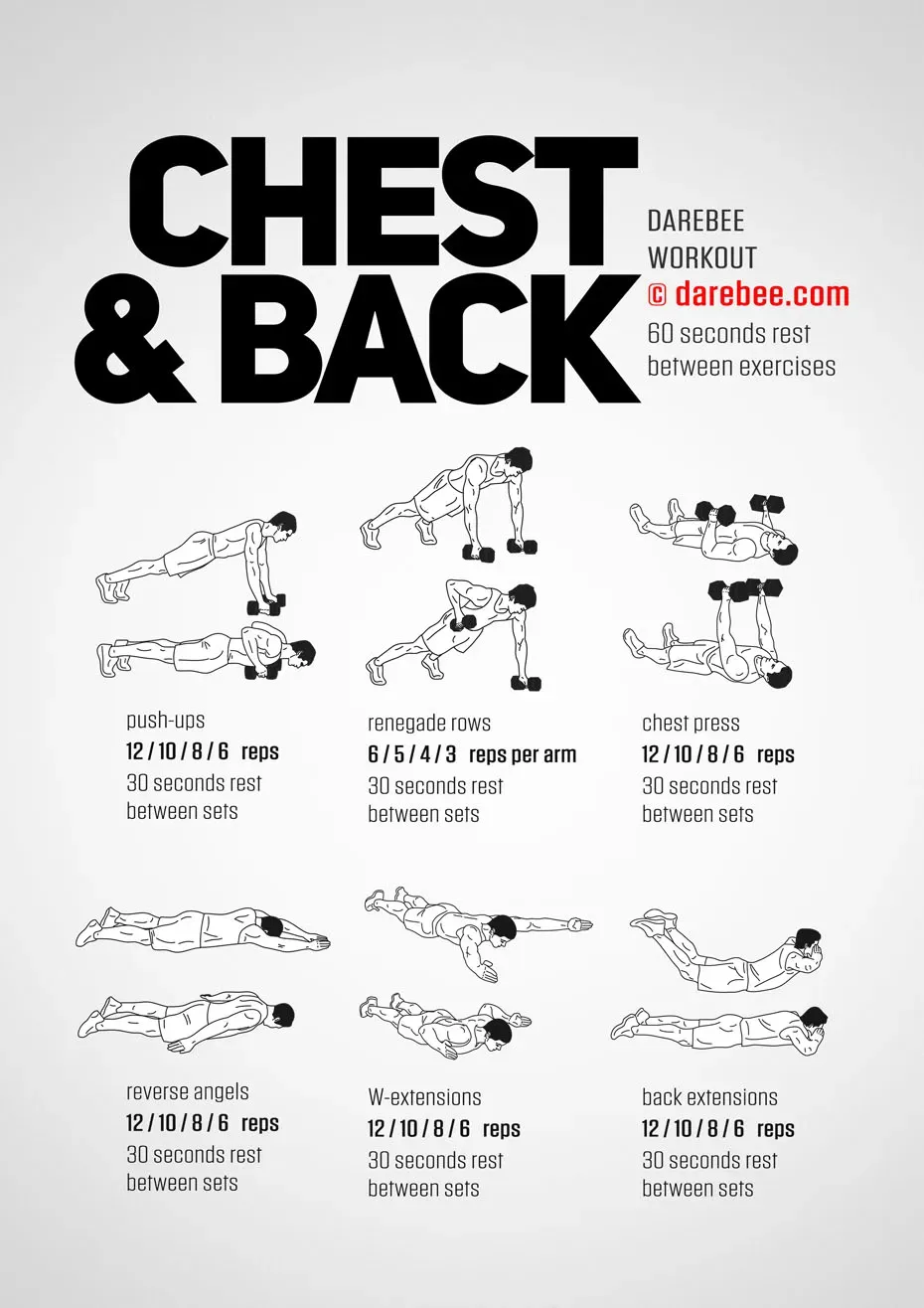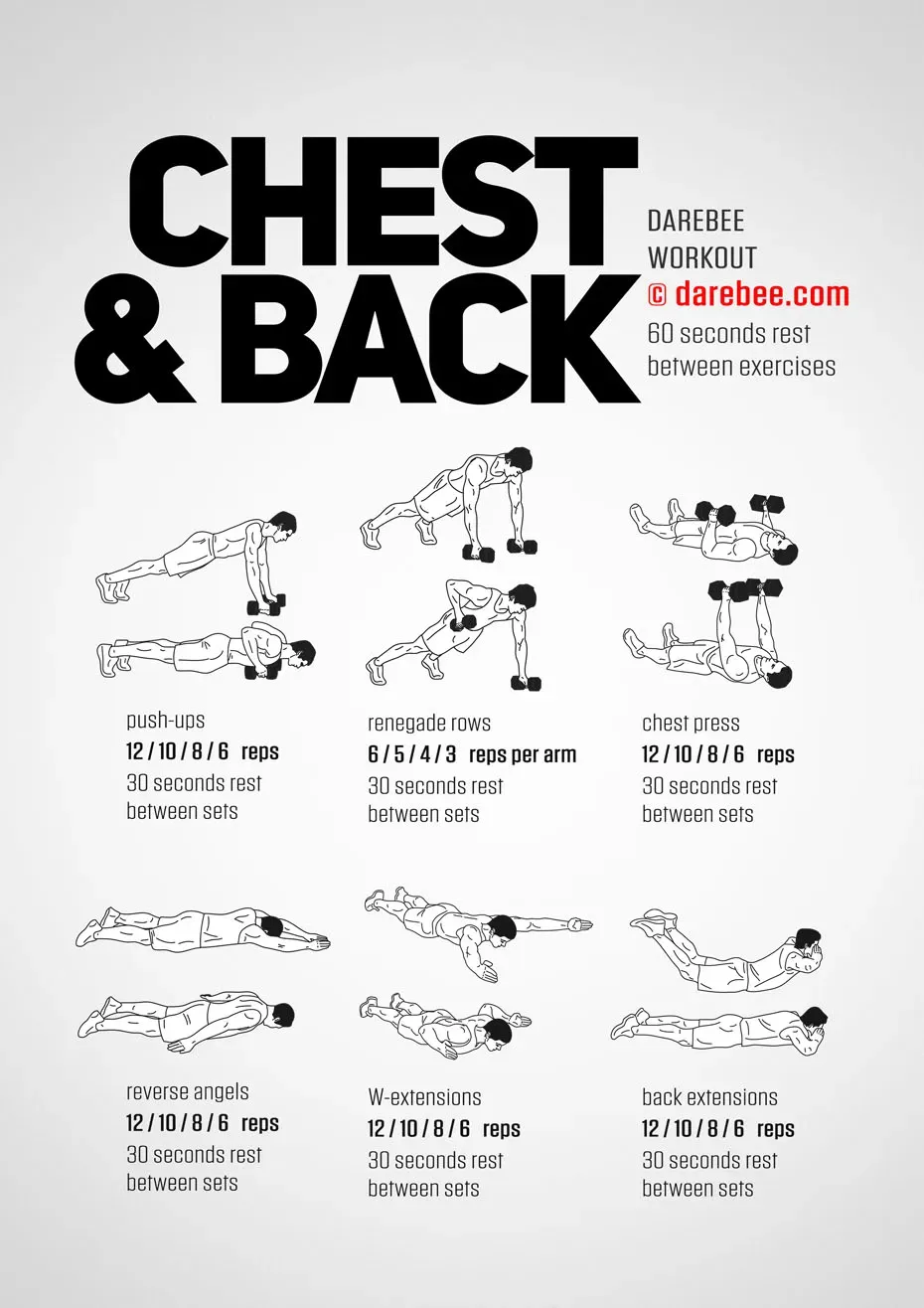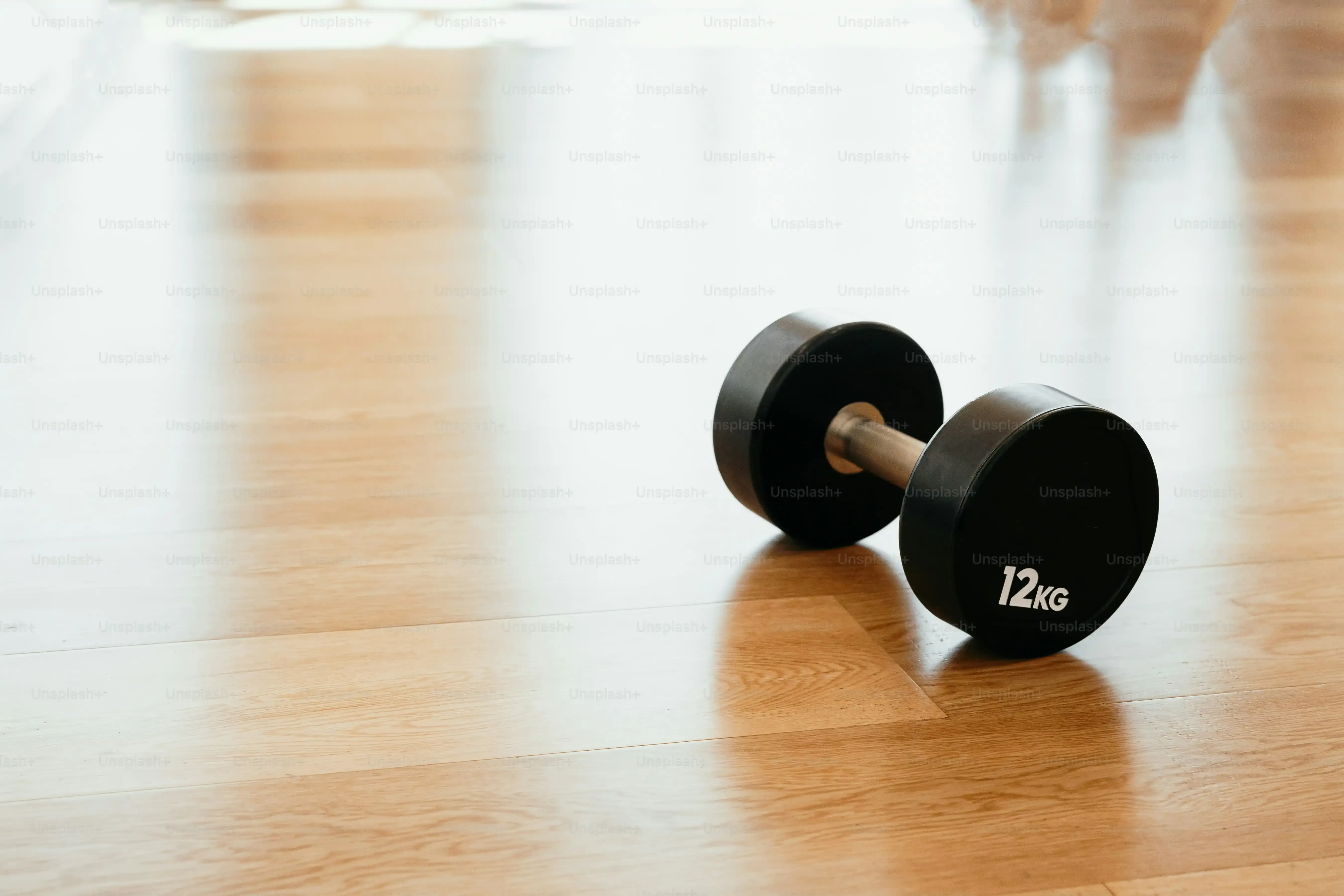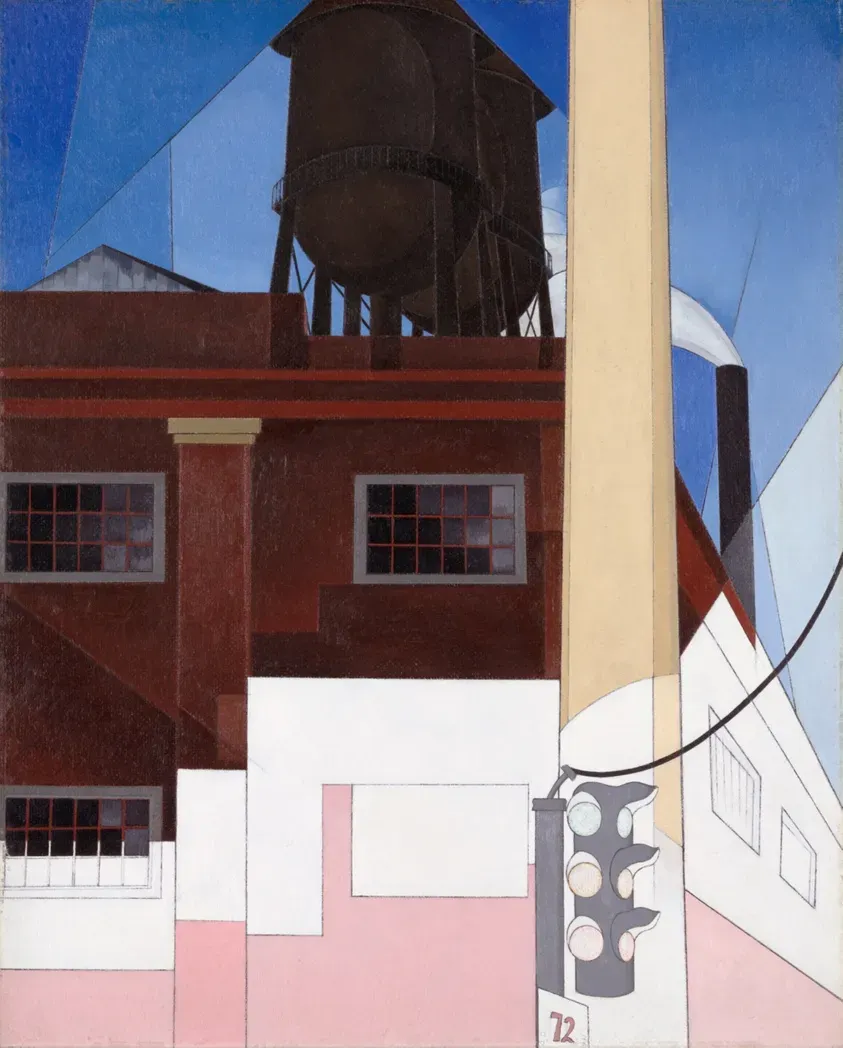Table of Contents
Let's be real. Hitting the gym isn't always in the cards. Maybe time is tight, or perhaps you just prefer the privacy of your own space. Whatever the reason, you might think building a strong, balanced upper body—specifically your back and chest—requires heavy weights and fancy machines. That's simply not the case.
Why Combine Back and Chest in Your At Home Workout?

Why Combine Back and Chest in Your At Home Workout?
So, you're thinking about an at home back and chest workout and wondering if pairing them makes sense? It absolutely does. Training opposing muscle groups like your chest (pushing) and back (pulling) in the same session is incredibly efficient. It helps create muscular balance, which is crucial for posture and preventing injuries. Think about it: if your chest is super strong but your back is weak, you'll likely end up rounded forward, like a question mark. Working these muscle groups together ensures you're developing strength on both sides of your upper body evenly, making your workout time more productive and promoting better overall function.
Essential Exercises for Your At Home Back and Chest Workout

Essential Exercises for Your At Home Back and Chest Workout
Alright, let's talk about the meat and potatoes of your at home back and chest workout. You're probably thinking, " but what *exactly* do I do without a bench press or a pull-up bar?" Good question. The beauty of bodyweight training, or calisthenics if you want to get fancy, is how effective simple movements can be when done correctly. We're not reinventing the wheel here; we're focusing on foundational exercises that have built strength for centuries, long before fancy gyms were a thing.
These moves hit the key muscles. Your chest gets worked with pushing motions, and your back gets challenged with pulling. It's about using your own body as the resistance. Here’s a quick look at the heavy hitters:
- Push-ups (all variations)
- Rows (using furniture, towels, or resistance bands)
- Inverted Rows (if you have a sturdy table or bar)
- Dips (using chairs)
- Supermans or Cobras (for the lower back)
Forget those isolation machines. These compound movements work multiple muscle groups at once, giving you more bang for your buck in less time. They build functional strength that actually translates to real-life activities, like carrying groceries or pushing a stubborn door open. Plus, mastering them feels pretty darn good.
Structuring Your Weekly At Home Back and Chest Workout Routine

Structuring Your Weekly At Home Back and Chest Workout Routine
Making Time for Gains
Alright, so you've got the exercises down for your at home back and chest workout, but how do you actually fit this into your week without it feeling like another chore? Consistency beats intensity every single time when you're training at home. Don't try to go from zero to hero overnight. Start realistic. Maybe you can commit to two or three sessions a week. That's perfectly fine. The key is showing up, even when you don't feel like it. You could do a full upper body day hitting both back and chest, or split them up if you prefer, although combining them as opposing muscle groups is often more time-efficient. Listen to your body; rest days are just as important as workout days. Skipping rest is a one-way ticket to burnout or, worse, injury.
- Option 1: Full Upper Body (Back & Chest) 2-3 times per week, with rest days in between.
- Option 2: Push Day (Chest, shoulders, triceps) and Pull Day (Back, biceps) split, 2 days per week each.
- Option 3: Integrate into a full-body routine, hitting back and chest every other day.
Progressing and Perfecting Your At Home Back and Chest Workout

Progressing and Perfecting Your At Home Back and Chest Workout
Making Your At Home Back and Chest Workout Harder
Alright, so you’ve mastered the basic push-up and you can do rows using your sturdy kitchen table without breaking a sweat (or the table). What now? You can't just do the same number of reps forever and expect to keep getting stronger. Progression is key. This doesn't mean you suddenly need to buy a squat rack for your living room. It means finding ways to increase the challenge using what you have.
For push-ups, elevate your feet on a chair or sofa to shift more weight onto your upper body. Try different hand positions – wider for more chest, narrower for more triceps, but still hitting the chest. For rows, you can use resistance bands if you have them, or find creative ways to add weight – a backpack filled with books works surprisingly well, though maybe don't tell your librarian. The goal is to make the last few reps tough, but not impossible, while maintaining good form.
Focusing on Form Over Reps
Anyone can crank out twenty sloppy push-ups. But what did that actually do for your chest and back? Probably not much, except maybe strain your wrists or shoulders. Perfecting your at home back and chest workout isn't just about doing more; it's about doing it *right*. Think about the mind-muscle connection. When you're doing a push-up, are you actively squeezing your chest? When you're rowing, are you pulling with your back muscles, or just yanking with your arms?
Slow down the movement. Control the eccentric (lowering) phase. Feel the muscles working through their full range of motion. This focus on quality over quantity is where real gains happen, and it significantly reduces your risk of injury. It’s like the difference between speed-reading a book and actually understanding the story. Which one sticks with you?
- Slow down repetitions (e.g., 3 seconds down, 1 second pause, 1 second up).
- Ensure full range of motion (chest to floor on push-ups, shoulder blades squeezed on rows).
- Record yourself to check form from different angles.
- Focus on feeling the target muscle work.
Consistency and Listening to Your Body
Building a strong back and chest at home isn't a race. It's a marathon, run in your living room. The most perfect program in the world is useless if you don't actually do it. Find a schedule that fits your life and stick to it. Two or three consistent workouts a week are far better than one heroic session followed by two weeks of inactivity. Life happens, sure, but don't let perfect be the enemy of good.
Equally important is learning to listen to your body. Soreness is normal; sharp pain is a warning sign. Pushing through pain is foolish, not brave. If something feels off, take an extra rest day or modify the exercise. Your body is giving you feedback; ignoring it is like driving with the check engine light on. Eventually, something important breaks down. Recovery, sleep, and nutrition are just as much a part of your at home back and chest workout as the exercises themselves.
Making Your At Home Back and Chest Workout Stick
So, there you have it. Ditching the gym doesn't mean ditching your upper body goals. An effective at home back and chest workout is within reach, requiring commitment more than equipment. We've covered why pairing these muscle groups makes sense, highlighted the essential moves that build real strength, and discussed how to structure a routine that fits your life. Remember, consistency beats intensity every time, especially when you're starting out. Keep challenging yourself, focus on proper form, and build that solid foundation right where you are. Your living room might just become your new favorite training ground.
